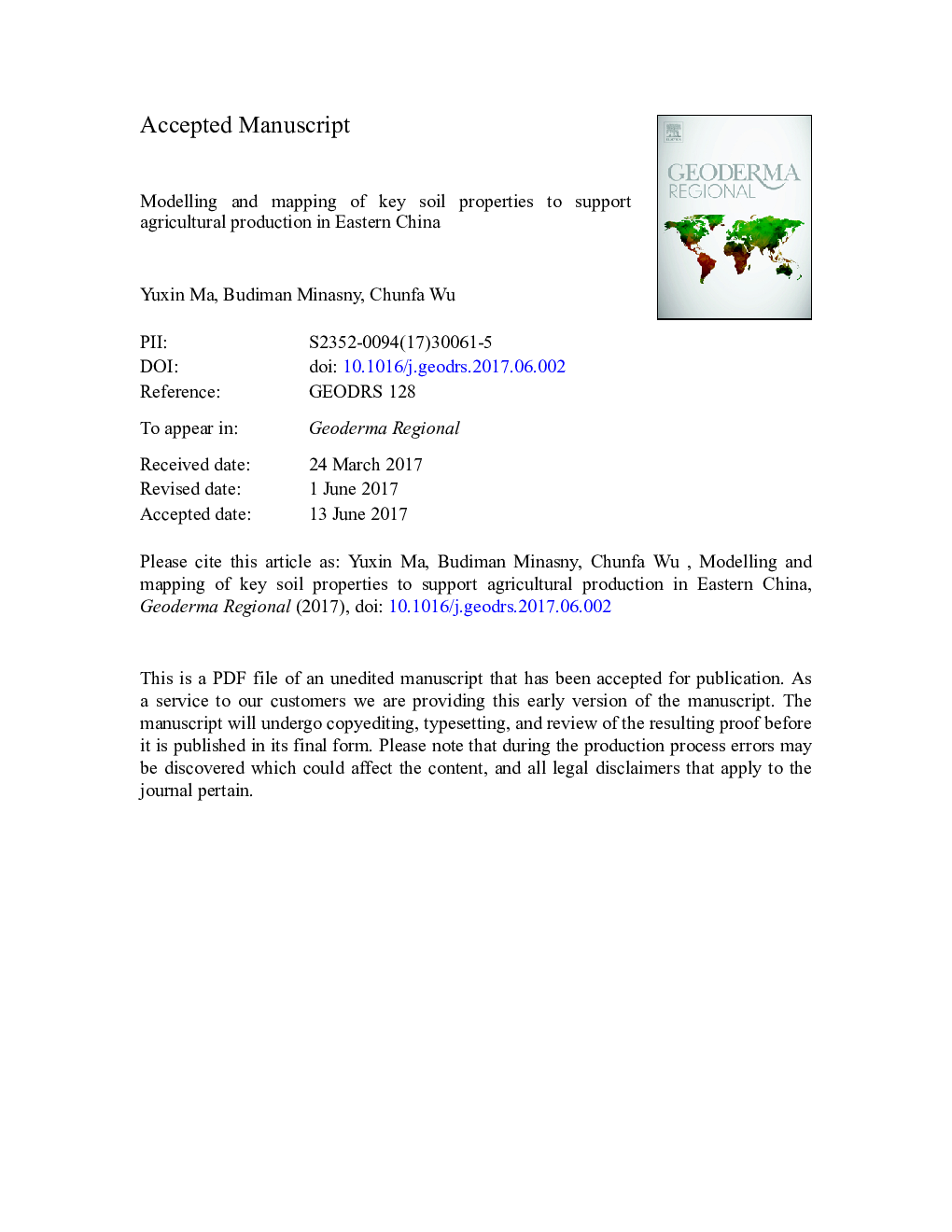| Article ID | Journal | Published Year | Pages | File Type |
|---|---|---|---|---|
| 5758654 | Geoderma Regional | 2017 | 27 Pages |
Abstract
The spatial prediction of soil attributes plays important roles in establishing areas for agricultural development and sustainable land management. This paper aimed to model and map various soil properties (i.e. texture, pH, and soil organic matter content) at a spatial resolution of 90Â m across a 21Â million-ha. area in Eastern China using 2895 legacy topsoil observations coupled with freely available covariates (i.e. DEM, Landsat, Climate and Radar data). A decision tree model (Cubist) and a Regression Kriging (RK) approach were used in the modelling process. The prediction results showed that the RK approach achieved high accuracy in predicting the spatial distributions of soil properties that were affected by human activities (i.e. soil pH and organic matter content). Moreover, DEM data decomposed to different spatial scales and climate factors were found to be the most important predictors in this study area. It was concluded that the current methodology can be readily expanded to the whole China using existing soil data as a contribution to the GlobalSoilMap project.
Keywords
Related Topics
Physical Sciences and Engineering
Earth and Planetary Sciences
Earth-Surface Processes
Authors
Yuxin Ma, Budiman Minasny, Chunfa Wu,
